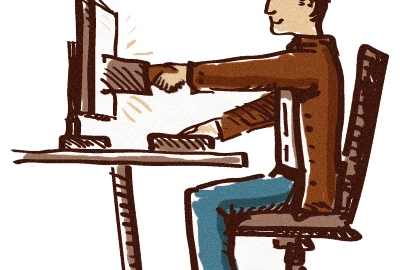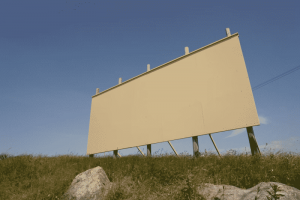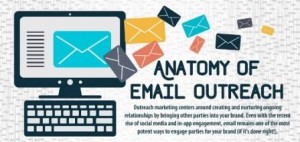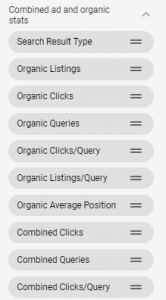— October 19, 2018

Email has died a thousand deaths. And each time, it comes back stronger and better than ever. Email isn’t going away. Social media needs it, businesses need it, and we all still need it.
Email is still one of the best channels for reaching your customers. WordStream has a great rundown of email marketing today…
- Email is the third most influential source of information for B2B audiences, behind only colleague recommendations and industry-specific thought leaders.
- 86% of business professionals prefer to use email when communicating for business purposes.
- CTRs are 47% higher for B2B email campaigns than B2C email campaigns.
- 59% of B2B marketers say email is their most effective channel in terms of revenue generation.
The inbox is still the most reliable place to connect with your clients. But, the inbox is sacred. People hate spam. And, whether they are busy or not, they simply do not have the time or patience to read through a bunch of junk (perceived or otherwise).
Be quick, clear, and concise. Email marketing is a matter of the right message at the right time to encourage action.
Email Marketing – The Right Message
Determining your message depends on your goals and your audience’s needs. Nothing new here. This is the baseline for all marketing efforts.
But remember, the inbox is sacred. Any misuse of your access to someone’s inbox will likely result in an unsubscribe or, even worse, being reported as spam.
Do not abuse your access to the inbox. Add value to their inbox with an effective message. An effective email message is quick, clear, and concise, with an obvious call to action (more on this later).
Email Message – Quick
Since we’ve scaled back our email messaging and even formatting, we’ve noticed an uptick in interaction. More people are clicking and replying to our new version.
We decided to strip away more of the styling and get hyper-focused on our message. Take a look below. The left is our old version and the right is the new version.
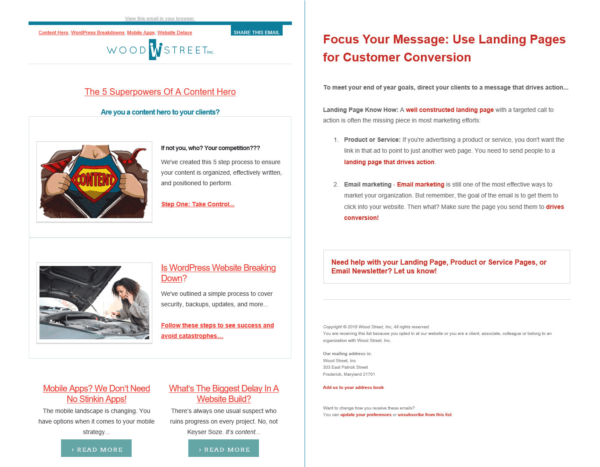
As a design firm, it’s hard for us to do something this minimal. But, it makes more sense for what we’re trying to achieve… we have a lot of industry knowledge, 16+ years worth, and want to share these tips with our subscribers to help them succeed.
But, we’re not so delusional that we expect subscribers to drop what they’re doing and pore over every detail of our newsletter. Nope, they are going to scan it and look for something that could help them solve a marketing problem they might have.
This email is quickly digested and acted upon. We’ve stripped away any distractions that stand in the way of scanning and, more importantly, conversion.
Email Message – Clear and Concise
One of my favorite email newsletters (and some of my favorite people) comes from MarketingProfs. They just went through a major rebrand and I love it! In addition to the new logo and website, they’ve continued to refine and improve their email newsletter experience.
Just like ours above, their new newsletter is cleaner and much easier to scan. The old version is on the left and the new version is on the right…
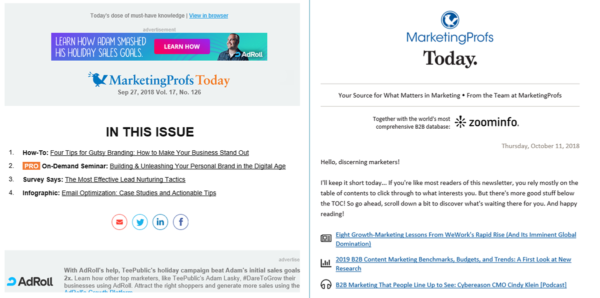
They did keep one feature that I’ve always loved which is to link directly to the articles on the website from the list at the top. For those of us who prefer to read them on the site, this is awesome. Plus, it drives more traffic to the site which is the point.
Email Marketing – The Right Time
If you did a search for the best time to send an email, you would end up with more questions than answers. Some will say you have to send your email at 10am on Tuesday. Others will argue that 3am Monday morning is the best.
And neither one is wrong. The when depends on a few things…
- Your audience
- The message
- Desired action
If you read our blog at all, you will notice a theme here. Who are you talking to? What are you saying? What do you want them to do (more on this below)?
Who Gets Your Email?
Knowing your audience is critical to email success. Our typical reader is a marketing professional between 25 and 45. They work at an office and check email mostly during the day.
So, for us, we’ve found that Tuesday at 10am is a good time to do an email drop. But, we didn’t just make an educated guess. We’ve tried a few different times throughout the week and the numbers do not lie.
We also use MailChimp. They have a feature that reviews the data from all of our previous email campaigns and suggests the optimal time to send email campaigns. Guess when that time is. Yup, Tuesday at 10am.
Whether your service has this feature or only provides simple stats, take the time to find the best… time.
Clicks and Opens
One note about stats. There is a big difference between a click and an open.
Email Open
An open is when the recipient has actually downloaded the email completely. Some readers will interact with your email without technically “opening” it.
This is because they are concerned about security and don’t download files automatically and/or they are worried about speed (mobile users will only download a portion of the email).
So, this number is a little misleading. But, it still gives you an idea of the number of people who “trust” you enough to open your email and look at it fully.
Email Clicks
Clicks are exactly what you think, the actual number of times someone clicked a link in your email. These are gold and definitely the number you should worry about.
You want to replicate the emails that get lots of clicks and eliminate the types that get little to none. A click is a conversion for your email campaign.
What Does Your Email Say?
What you say in your email campaigns can depend on the season, the market, certain trends, breaking news, etc. And regardless of what it is, it must be valuable to the reader. They should always have a takeaway.
Content marketing is the process of using content to generate positive sales or marketing results. Email marketing is part of content marketing. In other words, you are using your email campaigns to deliver access to valuable content. Content that plays a role in building your bottom line.
Email as a Sales Tool
Sure, you can use your email campaigns as a sales tool in the strictest sense, but remember: the inbox is sacred. It must be clear to the recipient that your email drops will be promoting products and/or services and nothing else.
These types of emails can still hold value for the user. Maybe they need to be kept up-to-date on the latest products or services. And, most likely, you’ll include some discounts or special offers.
Ultimately, it’s harder to show the value of subscription this way. If you need to get offers out there, try mixing them in with other valuable content.
According to a recent post on JeffBullas.com, Convince and Convert says that “People who buy products marketed through email, spend 138% more than people that do not receive email offers.”
But, I think Jeff Bullas and Jay Baer at Convince & Convert would both say to mix your offers with valuable content. Just sign up for their newsletters and you’ll see what I mean.
Email as a Content Marketing Tool
If you are creating valuable content, you’ll want to promote that content through email. For example, we will include a link to this blog post in one or more our email campaigns.
You might be thinking, “well, I’m writing all this content, and then giving it away via my email newsletter. What about sales? How does this help my bottom line?”
And you’re not wrong in asking this question. It helps in two ways for sure:
- You are building an online library of valuable content. This establishes you as a credible and valuable resource. Plus, all that keyword rich content will eventually get crawled and indexed by the search engines. This is what we call “evergreen content.”
- Email is a way to direct traffic to this content which will increase social sharing which can increase ranking and referrals. In the email and on the posts are great places to “ask for the business.” Think about it this way, you’ve given them something of value. Now is the best time to offer a product or service. The key is to not make the entire post a sales pitch. But, you can offer your services or products that relate to the subject matter of the post. More on this below.
Email Marketing Plans
Email marketing plans are an extension of your content marketing plan. Your content marketing plan will have an editorial calendar with a content schedule, associated author, target audience, and call to action.
Last minute email marketing will not produce consistent results. Sure, you might adjust course sometimes if you need to speak about a new law, trend, or other time sensitive information, but the basics of your email drops should be consistent and planned in advance.
We recommend a spreadsheet where you can map out the following:
- Email campaign schedule
- Seasonal or time-specific content from your editorial calendar
- Evergreen content
- The “ask”
You can get more granular than that of course, but start with something simple and manageable and build from there. Make sure it is a plan you can and will follow and track. Build from success and learn from failure. Adjust as needed.
Email Marketing – Encourage Action
What you say in your email is up to you and what you think your audience wants. Just remember, keep the email clear and concise and always direct them to your website where they can get more and/or take action.
It’s this action that will determine whether your email campaign is a success or failure. Simply sending out an email to a bunch of people is not an effective use of the medium. You want them to do something.
Some marketers will feel awkward asking for something from their audience. Instead of thinking of the ask as something salesy or smarmy, think of this as a natural part of the exchange.
Visualize the Call to Action

I’ll give you an example. I speak at marketing conferences across the country. I stand on a stage and deliver valuable content to the audience. At the end of my talk, I don’t just say “that’s it!” and walk off the stage.
No, I tell them to come find me afterwards if they have any questions. This is a great way for me to communicate further with a potential client who, because they were at my talk, knows that I know what I’m talking about.
Email is not unlike an in-person presentation. You are presenting something valuable to them. They can read that content to assess if you know what you’re talking about, and then make the determination whether they want to engage further.
Your call to action needs to be there when this determination is being made. Make it easy for them to take the next step, even to the point of telling them what that action should be…
- “Give us a call…”
- “Need help with your widget project, drop us a line (link)”
- “Please forward this email to anyone who…”
- “Please share this email with your social channels”
- “Find out more about our widget services here (link)”
Think through the interaction and place the ask where it makes the most sense. If you’re having a hard time finding the perfect spot, try imagining your email as an in-person presentation or conversation. Where would the ask feel most natural? Place it there.
And make sure that when you send them to your website unless it’s an article, send them to an effective landing page.
Email marketing is an incredibly effective marketing tool, if used responsibly. Remember, email marketing is a matter of the right message at the right time to encourage action. Make sure it has value to the recipient. Deliver it when they are likely to interact. And make it easy for them to take the next step by strategically placing clear and timely calls to action.
Digital & Social Articles on Business 2 Community
(76)
